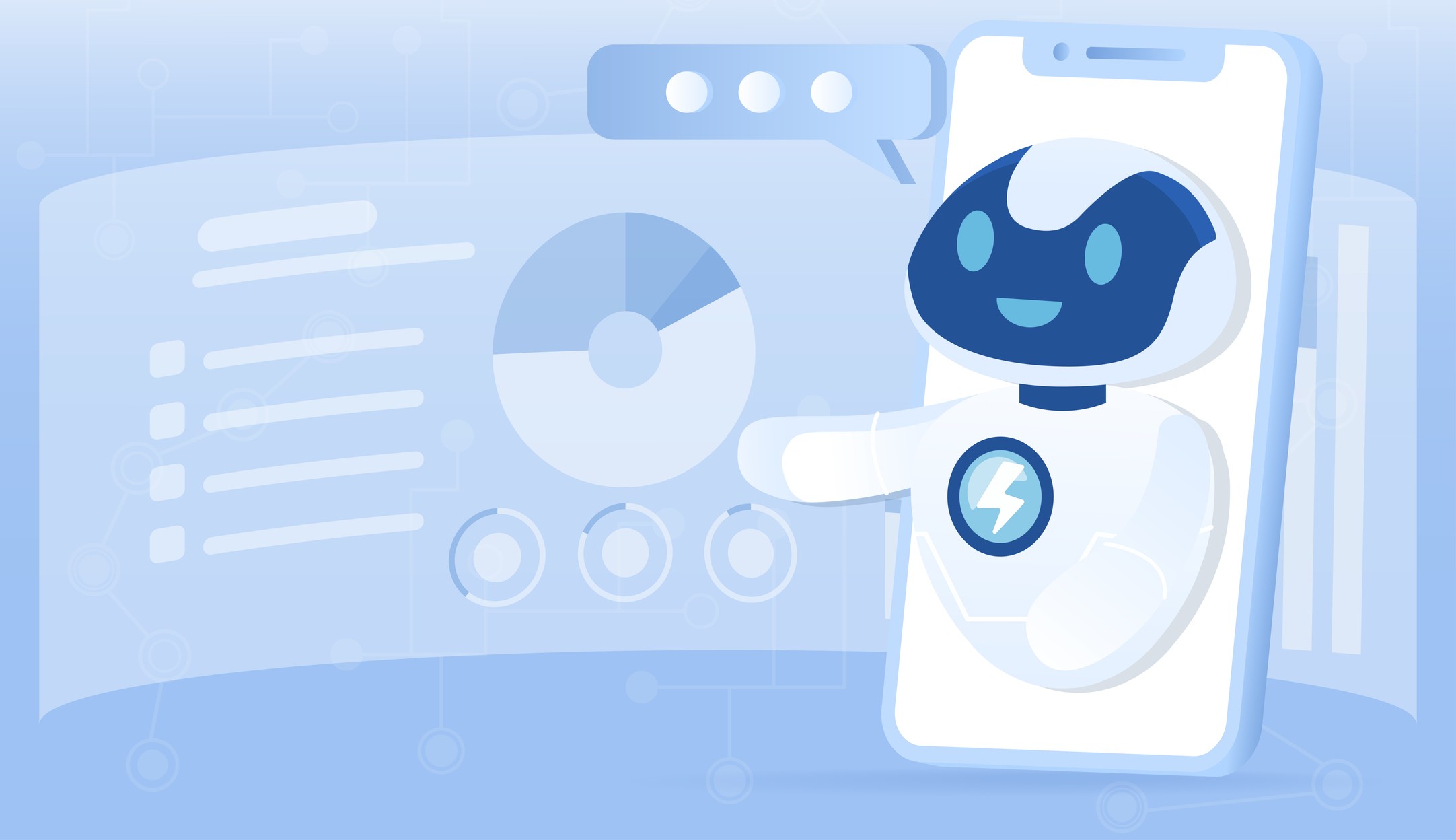Artificial intelligence has come a long way since its introduction. Initially, AI-powered chatbots were seen as the pinnacle of innovation, helping businesses streamline customer service and respond to inquiries around the clock. As AI technology evolves, its potential applications have expanded far beyond chatbots, offering creative and innovative ways to use AI on websites.
From personalizing user experiences to automating routine tasks, businesses can now integrate AI tools that not only enhance functionality but also create unique interactions tailored to their audiences. Finding fresh ways to use AI can provide a competitive edge, improve engagement, and simplify complex processes.
Why Use AI on Your Website?
Integrating AI into your website is more than just a trend; it’s a powerful strategy to improve efficiency, boost engagement, and deliver better experiences to your users.
Enhancing User Experience
AI tools can significantly improve how users interact with your website. Features like intelligent search, real-time recommendations, and voice assistants make navigation easier and more intuitive. For example:
- AI-powered chat support offers instant solutions to user queries without needing human intervention.
- Adaptive content delivery automatically adjusts visuals and text to match user preferences or device types.
This level of responsiveness ensures that every visitor feels valued and understood.
Streamlining Operations
For businesses managing high volumes of data or repetitive tasks, AI helps automate processes to save time and reduce errors. With the right tools, you can:
- Automatically categorize and tag content or images uploaded by users.
- Use AI-driven automation to manage customer queries, update inventories, or analyze data without manual input.
This allows your team to focus on strategic goals rather than operational minutiae.
Providing Personalized Interactions
AI excels at collecting and analyzing data to create highly personalized user experiences. By understanding individual preferences, you can:
- Tailor product recommendations based on browsing history or purchase behaviour.
- Deliver dynamic content like blogs or offers that are most relevant to each user.
These personalized interactions not only increase user satisfaction but also improve conversion rates and loyalty over time.
Unique Ways to Use AI on Your Website
AI offers far more than basic chatbot functionality. By exploring its diverse capabilities, businesses can create innovative, engaging, and efficient websites.
Predictive Personalization
AI-driven predictive personalization transforms how users interact with websites by analyzing their behaviour, preferences, and browsing history to deliver highly tailored recommendations. This technology helps businesses create unique, relevant experiences for every user, increasing engagement and conversion rates.
Predictive personalization uses machine learning algorithms to process user data in real time. It identifies patterns and trends in user behaviour, such as browsing history, clicked links, time spent on pages, and purchase history. These insights allow the AI to anticipate what users might be interested in and serve them relevant recommendations.
Benefits of Predictive Personalization:
- Visitors find what they’re looking for faster, improving satisfaction and retention.
- Personalized suggestions are more likely to convert browsers into buyers.
- Consistently delivering relevant content builds trust and strengthens user relationships.
Examples of Predictive Personalization
- eCommerce Recommendations
- An online clothing retailer suggests complementary items based on a user’s previous purchase of jeans, such as jackets, shoes, or accessories.
- Grocery delivery apps highlight frequently bought items or suggest recipes using previously purchased ingredients.
- Dynamic Content Delivery
- News websites personalize homepages with articles aligned to a reader’s preferred topics, such as sports, tech, or entertainment.
- Streaming platforms recommend shows and movies based on viewing history and ratings provided by the user.
- Email Campaigns
- A fitness website sends personalized workout plans or product promotions based on a user’s browsing behaviour, like searching for yoga gear or nutrition tips.
- Educational Platforms
- Online learning platforms recommend courses or study materials based on a student’s progress, performance, or interests.
Integrating predictive personalization, businesses can create websites that adapt dynamically to user needs, delivering experiences that feel intuitive and engaging. These personalized interactions not only benefit users but also drive measurable business growth.
AI-Driven Dynamic Content
AI-driven dynamic content allows websites to stay relevant and engaging by generating and adapting content in real time based on user preferences, trends, and behaviour. This innovative approach ensures that visitors see content that is most likely to resonate with them, enhancing their overall experience and increasing the likelihood of conversion.
AI analyzes user data, including browsing history, geographic location, time spent on pages, and clicks, to understand visitor preferences. Using this data, AI can dynamically adjust elements of your website, such as headlines, images, calls to action, and featured products. It can even generate entirely new content, like blog topics or summaries, based on current trends and keyword performance.
Benefits of AI-Driven Dynamic Content:
- Visitors are presented with content tailored to their unique interests.
- Relevant and up-to-date content captures attention more effectively.
- Regularly updated content aligned with trending topics can improve search engine rankings.
- Automating content updates saves time and resources for your team.
Examples of AI-Driven Dynamic Content
- Blog Topic and Summary Generation
- AI tools can analyze trending keywords in your niche and suggest high-impact blog topics to target emerging user interests.
- Automatically generate summaries for existing blog posts to share on social media or email campaigns, boosting engagement.
- Dynamic Homepages
- Retail websites can adjust featured products or promotions based on a visitor’s previous purchases or browsing patterns.
- News portals can prioritize trending stories relevant to a visitor’s location or past reading habits.
- Real-Time Headline Optimization
- AI can test and adjust headlines dynamically to see which ones perform best, improving click-through rates (CTR). For instance, a headline for a seasonal sale might change depending on user demographics or device type.
- Adaptive Visual Content
- Travel websites can showcase images of destinations aligned with a user’s recent searches, like beaches for users browsing tropical vacations.
- Food delivery platforms might highlight photos of dishes similar to a user’s last order or search query.
- Content Localization
- eCommerce platforms can display region-specific products, pricing, and shipping details for international visitors.
- Blogs can adjust language, cultural references, or local events based on the user’s IP address.
Using AI-driven dynamic content, businesses can ensure that their websites stay fresh, engaging, and highly relevant to each visitor.
Advanced Search Functionality
AI-powered search functionality is changing how users find information on websites. By leveraging technologies like Natural Language Processing (NLP), advanced search systems interpret user intent, deliver highly relevant results, and make the search experience intuitive and efficient. These capabilities are especially valuable for content-heavy websites, e-commerce platforms, and service-oriented businesses.
AI-enhanced search uses NLP to understand conversational language, recognizing context, synonyms, and even misspelled queries. This enables search systems to go beyond matching keywords, providing results based on meaning and intent. Coupled with machine learning, these systems improve over time by analyzing search patterns and user feedback.
Benefits of Advanced Search Functionality:
- Users can quickly find what they need without sifting through irrelevant results.
- Accurate search results keep visitors engaged and encourage deeper site exploration.
- Streamlined search experiences reduce friction, leading to higher purchases or inquiries.
- Analyzing search data provides valuable insights into user needs and preferences.
Features of AI-Powered Advanced Search
- Predictive Search Suggestions
- AI predicts search terms as users type, offering auto-complete options that match popular or relevant queries.
- Example: A bookstore website suggests "science fiction novels" as the user types "sci."
- Semantic Search
- NLP allows the search engine to understand context and intent, ensuring results match the user’s true needs.
- Example: Searching “cheap flights to Toronto” yields results for budget airlines and travel deals instead of unrelated flights.
- Faceted Search Filters
- Dynamic filters refine results based on categories, price ranges, ratings, or other attributes.
- Example: An e-commerce site lets users filter shoes by size, color, and brand after typing “running shoes.”
- Error Tolerance
- AI corrects misspellings and suggests alternatives without interrupting the search flow.
- Example: A search for “iphon chargr” returns results for “iPhone charger.”
- Recommendation Integration
- AI displays related products, articles, or services alongside primary search results to encourage further exploration.
- Example: Searching for "winter jackets" on a retail site might also highlight "winter boots" or "thermal gloves."
- Voice-Activated Search
- Voice search capabilities allow users to ask queries in natural language, ideal for mobile users and accessibility.
- Example: A food delivery app processes voice commands like “Find vegan restaurants near me.”
AI-powered advanced search goes beyond simple functionality to become a strategic tool for improving user experience and driving engagement. Whether you’re running an online store, a content-rich site, or a service portal, implementing advanced search functionality ensures that users quickly and effortlessly find exactly what they’re looking for, keeping them coming back for more.
Visual Recognition Tools
AI-powered visual recognition tools are transforming how websites process and utilize images and videos. By leveraging advanced machine learning algorithms, these tools can analyze visual content uploaded by users and extract meaningful data. This capability is especially valuable for e-commerce platforms, social networks, and creative industries, as it enhances usability and delivers a highly interactive experience.
Visual recognition tools use deep learning techniques to identify patterns, colours, shapes, objects, and even emotions in images or videos. The system learns to "see" and understand visual elements, enabling it to classify, tag, or match content accurately. Over time, these tools improve as they are exposed to more data, making them smarter and more efficient.
Benefits of Visual Recognition Tools:
- Simplifies complex tasks like searching for products or categorizing uploads.
- Reduces manual efforts in tagging, sorting, or organizing visual data.
- Enhances site navigation for visually driven industries.
- Interactive features like visual search keep users engaged and encourage exploration.
Applications of Visual Recognition Tools
- Product Categorization
- Automatically classify and tag products based on visual attributes like color, size, or style.
- Example: An online clothing store groups shirts by patterns such as stripes, solids, or florals based on uploaded product images.
- Visual Search
- Users can upload an image to find visually similar items on the website.
- Example: A user uploads a photo of a handbag, and the e-commerce platform suggests matching products in various brands and price ranges.
- Content Moderation
- Detect and block inappropriate or restricted content on social platforms or forums.
- Example: A photo-sharing site automatically flags and removes offensive images before they appear publicly.
- Augmented Reality (AR) Integration
- Overlay products or designs onto real-world environments using visual input (integrating Augmented Reality).
- Example: A furniture website allows users to upload photos of their room and see how a couch or table would look in the space.
- Facial Recognition and Emotion Analysis
- Identify faces or analyze expressions for personalized interactions or security purposes.
- Example: A photography platform tags people in uploaded photos or a wellness app adjusts mood-boosting content based on a user’s facial expressions.
Visual recognition tools are not just features; they’re transformative technologies that redefine how users interact with your website. They cater to modern user expectations for intuitive, efficient, and visually engaging experiences.
Voice Search and Commands
Voice AI integration is reshaping website accessibility and user interaction by enabling hands-free navigation. With voice recognition technology becoming more sophisticated, websites can now accommodate users who prefer or need to interact verbally, making the browsing experience more intuitive and inclusive.
Voice search and command systems use Natural Language Processing (NLP) and machine learning to understand spoken queries. These systems interpret user intent, respond with relevant information, and execute tasks like form-filling or transactions based on voice input. Integration with smart devices and virtual assistants further enhances the functionality and reach of voice AI.
Benefits of Voice Search and Commands:
- Users can perform tasks like searching, booking, or shopping while multitasking or on the go.
- Empowers individuals with visual impairments, motor disabilities, or those who find traditional navigation challenging.
- Speeds up actions, such as finding information or completing forms, by eliminating typing.
- Appeals to a broader audience, including users who prefer conversational interactions.
Applications of Voice Search and Commands
- Voice-Powered Search
- Users can speak search queries instead of typing them, making the process faster and more natural.
- Example: A user asks, “What’s the best winter jacket under $200?” and the website provides tailored results instantly.
- Form Filling and Transactions
- Voice commands enable users to input data, such as names and addresses, or complete purchases.
- Example: A food delivery app allows customers to place orders by saying, “Order a large pepperoni pizza with garlic bread.”
- Content Navigation
- Users navigate websites through voice commands like “Show me the latest blog posts” or “Go to the pricing page.”
- Example: A SaaS platform helps users find features or pricing details by simply saying, “What’s included in the Pro plan?”
- Personalized Recommendations
- Voice AI remembers user preferences and delivers customized suggestions.
- Example: A fitness website recommends workout plans when a user says, “Suggest a 30-minute cardio routine.”
- Voice-Enabled Chat Support
- Users interact with AI chatbots through voice, receiving immediate assistance without typing.
- Example: An e-commerce site offers order tracking updates when a user asks, “Where is my package?”
The growing adoption of voice-activated smart devices and the increasing reliance on hands-free interactions make voice search and commands essential for modern websites. Businesses that integrate these features not only improve accessibility and convenience but also create a seamless user experience that stands out in competitive markets.
WyldCode Voice Control for Joomla
Enhance your website with WyldCode Voice Control for Joomla! Offer users an intuitive voice command feature for effortless navigation and a more accessible, customized interface. Download Plugin
Intelligent Automation
By automating repetitive processes, businesses can save time, reduce manual errors, and focus on more strategic priorities with automation powered by AI. From data validation to customer engagement, AI-driven automation improves efficiency while enhancing user experience.
Intelligent automation uses machine learning algorithms and predefined workflows to execute tasks with minimal human intervention. These systems analyze patterns, predict outcomes, and adapt over time to improve accuracy and reliability.
Benefits of Intelligent Automation:
- Frees up staff by automating repetitive tasks like data entry, order processing, or customer follow-ups.
- Minimizes human mistakes, ensuring greater consistency and accuracy.
- Speeds up processes like form completion or query resolution, reducing user frustration.
- Easily handles increasing workloads without requiring additional resources.
Applications of Intelligent Automation
- AI-Powered Forms
- Automatically fill, validate, and process form submissions to save users time and ensure accuracy.
- Example: A job application form auto-fills fields like name and address from previously entered data while validating email formats and phone numbers.
- Automated Email Follow-Ups
- Send personalized emails based on user actions, such as abandoned carts or survey completions.
- Example: An e-commerce site automatically emails a discount code to users who leave items in their cart without purchasing.
- Customer Support Automation
- AI chatbots resolve common issues or answer FAQs instantly, handing over complex queries to human agents.
- Example: A travel website’s chatbot helps users rebook flights or check luggage policies without waiting for support staff.
- Dynamic Pricing and Discounts
- Automatically adjust prices based on demand, competition, or user behaviour.
- Example: A hotel booking site uses AI to offer personalized discounts for returning customers searching for similar accommodations.
- Inventory Management
- Automate stock updates and reorder notifications to avoid overselling or understocking.
- Example: An online store automatically removes out-of-stock items from listings and alerts the admin to reorder popular products.
- Lead Scoring and Management
- Automate the classification and prioritization of sales leads based on engagement and behaviour.
- Example: A SaaS company uses AI to assign scores to leads based on website activity, helping sales teams focus on the most promising opportunities.
Incorporating intelligent automation into your website can drastically reduce operational bottlenecks and enhance the overall user experience. Automating routine tasks, businesses can ensure efficiency, accuracy, and scalability while maintaining a personalized approach for users. Whether it’s through AI-powered forms, follow-up emails, or real-time inventory updates, intelligent automation empowers businesses to deliver seamless interactions and improve productivity.
AI-Enhanced Analytics
AI-enhanced analytics enhances how websites gather, process, and utilize data. By accessing machine learning and real-time processing capabilities, AI can analyze vast amounts of data to uncover trends, monitor user behaviour, and generate actionable insights. This empowers businesses to make informed decisions, optimize performance, and anticipate future opportunities.
AI-enhanced analytics integrates with website tracking tools to analyze user activity, such as clicks, page visits, time spent, and conversions. These systems identify patterns and anomalies, providing insights that are difficult to achieve with traditional analytics. AI also uses predictive modeling to forecast trends and user preferences, enabling proactive adjustments to strategies.
Benefits of AI-Enhanced Analytics:
- Get immediate feedback on user behaviour and website performance.
- Translate raw data into clear, actionable strategies for growth.
- Anticipate user needs and market trends to stay competitive.
- Use insights to deliver tailored content, products, or services to specific audience segments.
- Focus resources on high-performing areas while addressing inefficiencies.
Applications of AI-Enhanced Analytics
- User Behaviour Monitoring
- AI tracks how users interact with your website, identifying high-traffic pages, drop-off points, and engagement metrics.
- Example: A blog analyzes which articles retain readers the longest and adjusts its content strategy to focus on similar topics.
- Predictive Analytics
- AI forecasts future trends and user preferences based on historical data.
- Example: An e-commerce platform predicts which products are likely to sell during a specific season, optimizing inventory and marketing campaigns.
- Customer Segmentation
- Automatically group users into segments based on behaviour, demographics, or purchase history.
- Example: A SaaS website identifies power users versus casual users and creates targeted onboarding campaigns for each group.
- Content Optimization
- AI evaluates which types of content perform best and suggests improvements for underperforming areas.
- Example: A news website uses analytics to identify which headlines generate the most clicks and refines its editorial strategy accordingly.
- Campaign Performance Analysis
- Measure the success of marketing efforts in real-time and adjust strategies for better outcomes.
- Example: A retailer tracks ad clicks and conversions during a holiday sale, reallocating budget to the highest-performing channels.
- Anomaly Detection
- AI spots unusual patterns or performance issues, such as traffic drops or unexpected spikes in bounce rates.
- Example: A subscription service identifies a sudden increase in cancellations and investigates the cause before it impacts revenue.
AI-enhanced analytics turns data into strategic opportunities. From improving user experience to optimizing content and marketing campaigns, these tools enable businesses to stay agile and proactive. With predictive analytics, anomaly detection, and real-time insights, AI-enhanced analytics ensures that your website not only performs well today but also evolves to meet tomorrow’s challenges.
Other Unique Ideas for Using AI on Your Website
In addition to the applications already discussed, here are other innovative ways businesses can use AI to enhance their websites:
- Gamification Features
AI can analyze user behaviour to create personalized challenges, quizzes, or rewards, boosting engagement and retention through gamification. - AI-Powered Accessibility Tools
Features like automatic text-to-speech conversion or AI-driven content simplification can make websites more inclusive for all users. - Fraud Detection Systems
AI can identify and block suspicious activities such as fake accounts, fraudulent transactions, or spam submissions in real-time. - Sentiment Analysis
AI can monitor user feedback from forms, reviews, or social media mentions to gauge customer satisfaction and address concerns proactively. - AI-Powered Recommendations for Content Creators
By using AI, content creators can receive insights on optimal posting times, trending topics, or SEO improvements tailored to their niche.
Tips for Successfully Using AI on Your Website
Implementing AI on your website is a strategic process that involves thoughtful planning and execution to align with your business objectives. By carefully aligning AI tools with your business goals and ensuring seamless integration, you can create a more efficient, engaging, and user-friendly experience.
Choose the Right AI Tools and Platforms
Not all AI solutions are created equal, and selecting the right tools is crucial for meeting your specific goals.
- Evaluate Needs - Identify the areas where AI can provide the most value, such as improving user experience or automating tasks.
- Scalability - Choose platforms that can grow with your business to avoid limitations as your needs evolve.
- Ease of Integration -Opt for tools that work seamlessly with your existing website infrastructure to minimize disruptions.
Focus on User Privacy and Data Security
As AI often relies on user data, prioritizing privacy and security is essential to maintain trust and comply with regulations.
- Transparency - Clearly communicate how user data will be collected and used.
- Compliance - Follow regional privacy laws like GDPR or CCPA.
- Secure Infrastructure - Use encrypted connections and robust data protection measures to safeguard sensitive information.
Test and Optimize AI Features for Usability
Even the best AI tools need to be tested and optimized to perform effectively on your website.
- Usability Testing - Ensure AI features work as intended across different devices and user scenarios.
- Iterative Improvements - Use feedback and analytics to refine functionality over time.
- Monitor Performance - Regularly track AI performance metrics, such as accuracy, speed, and user satisfaction, to make data-driven adjustments.
Integrating AI into your website doesn’t have to be complex. We specialize in custom AI development solutions to help streamline operations, enhance user experience, or implement cutting-edge AI features.
Redefine Website Interactions Using AI
AI offers unparalleled opportunities for online businesses and startups to enhance their websites, streamline operations, and create personalized user experiences. From predictive personalization to intelligent automation, the possibilities extend far beyond traditional applications like chatbots.
By integrating innovative AI tools and features, your website can become more engaging, efficient, and competitive. Whether it’s dynamic content delivery, AI-enhanced analytics, or advanced search functionality, integrating AI opens doors to new ways of connecting with your audience and achieving business goals.
Whether you're seeking ready-made tools or custom development solutions, the right integration can set your business apart. Start small, experiment with unique ideas, and watch how AI helps your website evolve into a truly intelligent platform.




